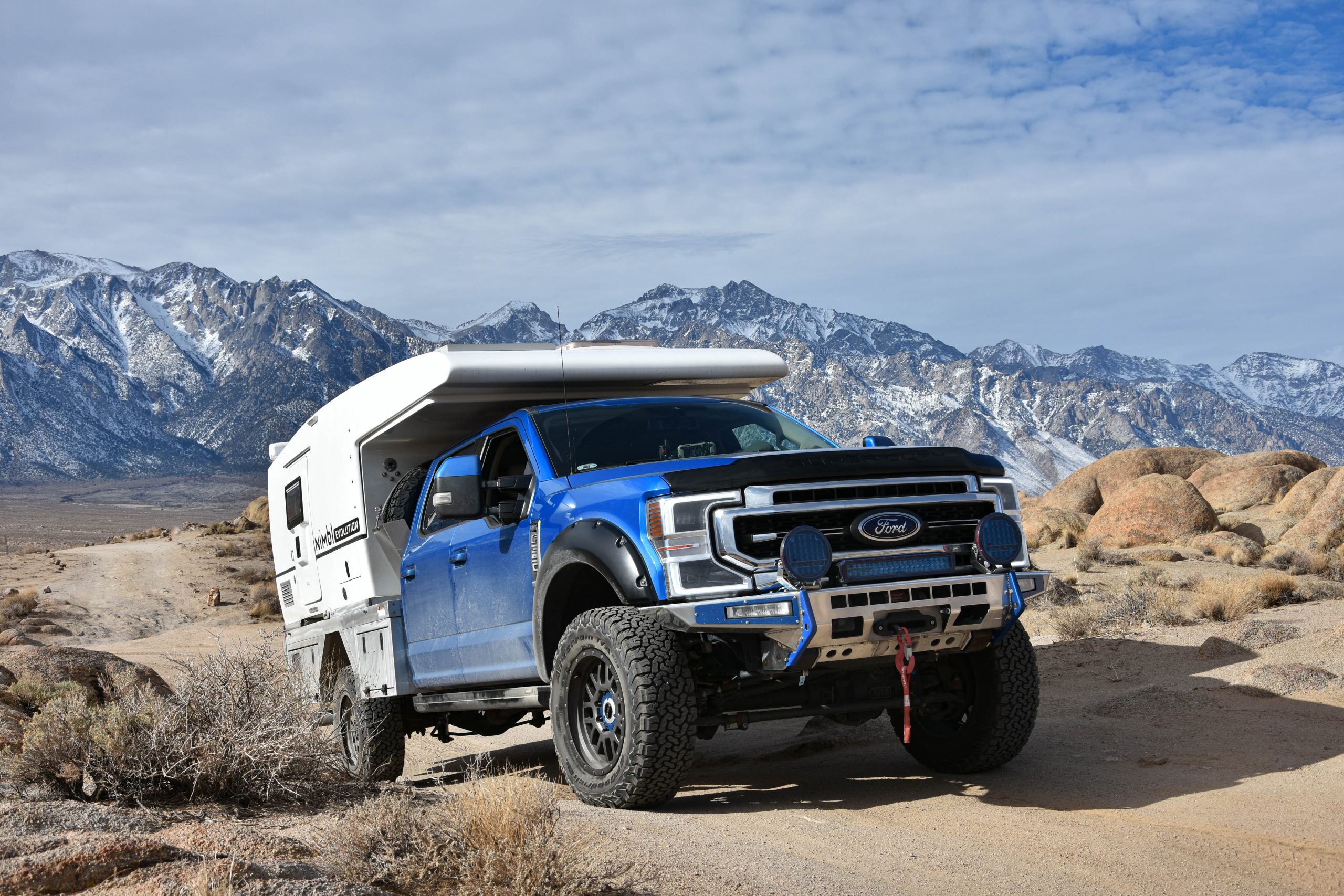The Donner Pass has a formidable reputation, and this festive winter found a South African family driving a marvelous vehicle over record depths of ice and snow—white-knuckled. Us Southern Hemisphere people know as much about snow as you might about sangomas and umqombothi, and to be perfectly honest, we avoid the white stuff as we travel the world. Our Defender is not built to explore frozen wonderlands; she is better suited to the heat and humidity of West Africa or Brazil. The vehicle we were driving towards an adventure was no ordinary vehicle; it was “Blue,” the Nimbl Evolution showcase vehicle, an incredibly versatile, all-terrain, all-weather camper.
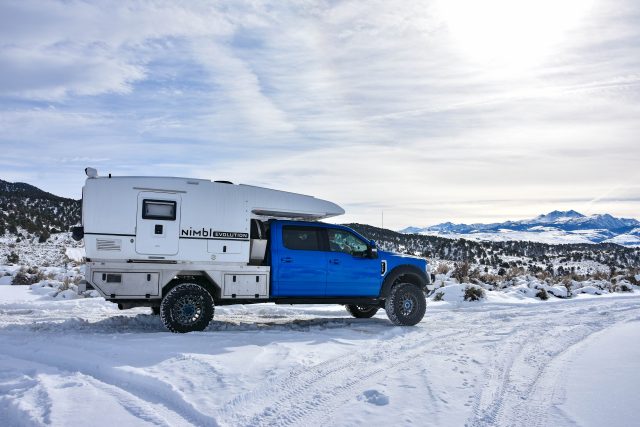
*To clear up any confusion, in August 2019, Be Change LLC bought XP Campers (established in 2007) and rebranded the camper as the Nimbl Evolution. The original camper was designed by legendary yacht maker Steve Kozloff.
Essentially, the Evolution consists of three primary components: the base vehicle, flatbed, and camper. The flatbed and camper are manufactured and mounted to the modified base vehicle by a team of craftsmen based in Colfax, California, in the shadow of the Donner Pass.

Base Vehicle
The Nimbl engineers chose the durable, high-performance, 7.3L V8 “Godzilla” motored Ford F-350 Super Duty as the base vehicle. But the Evolution camper can be mounted to any 1-ton pickup (Ford F-350, Chevy/Ram 3500). While the larger F-450 or F-550 is preferred by similar manufacturers as a base, the Nimbl gurus designed and manufactured the Evolution on the nimble F-350. This is partly due to its practicality for overland travel, as well as the belief that service, loans, insurance, and licensing are simpler with a “personal” vehicle as opposed to a “commercial” vehicle.
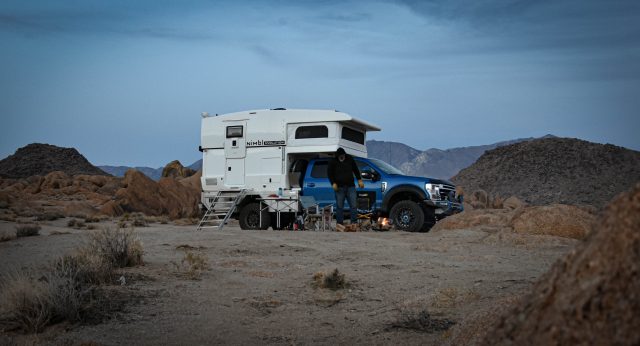
The Ford sits proudly on 35-inch all-terrain tires beneath a body-on-frame design, a 2.5-inch lift, an Icon front suspension setup, and a custom forged rear leaf pack. A 10-speed automatic transmission delivers tweaked, massive power to four corners, and a 48-gallon fuel tank ensures that every visit to the gas station is an investment, particularly at West Coast Premium gasoline prices. Ford’s ECO driving mode is a power-numbing farce; we did, however, manage 13 mpg driving in Normal mode (with a light foot) off-road, on the highway, and across mountainous terrain, giving us a maximum range of a respectable 620 miles. At lower continuous speeds, the vehicle would no doubt deliver significantly better fuel economy; the USA is one of few countries where you can cruise at 75 mph all day long.
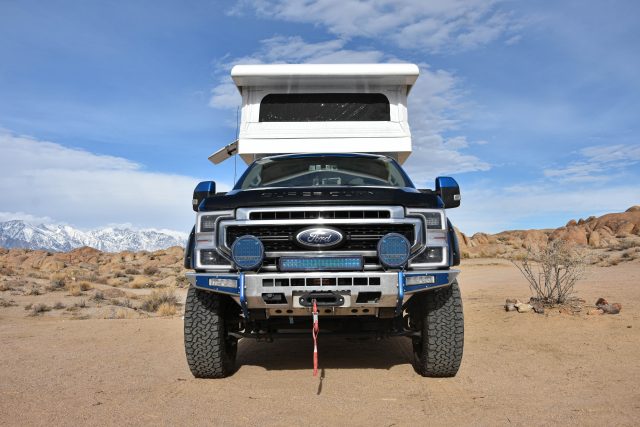
The base vehicle boasts adequate approach and departure angles, but the 176-inch wheelbase limits the breakover angle. While exploring remote areas, we could shift seamlessly to 4WD and engage the front ARB differential locks and the factory Ford E-Locker in the rear via switches without missing a slow beat. The suspension delivered grip and a steady, comfortable ride over corrugations and undulations while the V8 purred and growled and powered us to blissful campsites. We never needed the 12,500-pound winch nestled within the bull bar, but we did use the auxiliary lights, and they lit up Mount Whitney like a midnight sun. Driving the Ford was an absolute pleasure. We soon forgot the size of the truck while enjoying all the comforts and amenities of a premium vehicle—the entire family enjoyed the experience.
Flatbed
Custom-made in-house by a master welder and team of fabricators to the client’s specification, Blue sports a lightweight, sturdy, aluminum flatbed with large, practical, well-sealed, lockable storage boxes. A 6-foot tray slides out from the rear providing excellent storage and a work surface. Combined, these tray storage boxes swallow up MaxTrax, recovery gear, firewood, tools, spare parts, an axe, spade, air compressor, and every other gadget and gizmo—essential or not. We found after packing for a few weeks on the road that we had an entire bin available for the storage of groceries and refreshments.

A lockable fuel tank filler is mounted on a shelf between the flatbed and the camper beside a conveniently mounted spare wheel. A wide and practical access step ladder folds into a cavity between the camper body and flatbed. The LED indicator, camp, and reverse lights are integrated into the rear box bumper. Integrated pins secure the camper body to the flatbed seamlessly.
Evolution Camper
The Evolution camper is the star of the show, quite a statement given the base vehicle. This camper is unique and would not seem out of place traveling distant planets. If NASA chose to build a live-in exploration unit, the Evolution would be the perfect starting point, as the pod borrows much from the modern world of sailing, and spaceships are, after all, ships. (I like to call the camper a pod as the words fits like an astronaut’s glove.) The design has not fundamentally changed since the XP Camper original, but everything has changed. The Nimbl team has taken the XP’s design and retooled and improved every component, rendering the Evolution in a class of its own—at the midpoint of market price for freshly minted overland campers.
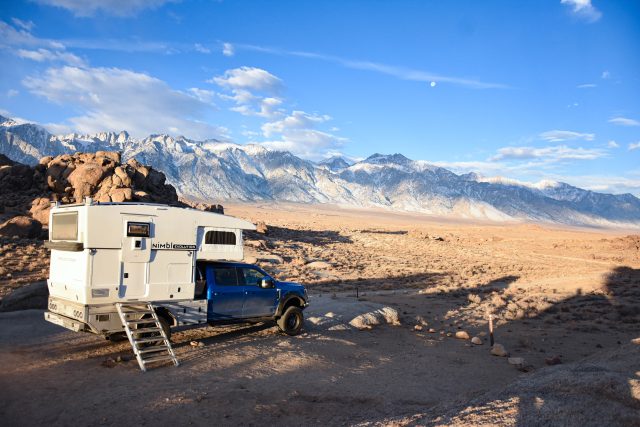
We travel as a family of four. While the vehicle was able to accommodate us comfortably, it is better suited to three occupants or a couple, offering all the comforts of home in a compact yet spacious pod. The roof lifts and lowers efficiently at the press of a button. With the heater on and the kettle boiling on the induction stove, we were able to settle in for the night or leave the kids to relax while we sat beside the campfire. Cooking and washing dishes is a painless affair in the large galley, and strategically placed roof-mounted fans extract steam, odors, and moisture, with all on-board power coming from an 800 Ah LiFePO4 DC power system. Even 10°F could not dampen our moods as the Webasto heater, plumbed to the main fuel tank, pumped warm air all night long with little influence on the fuel level.
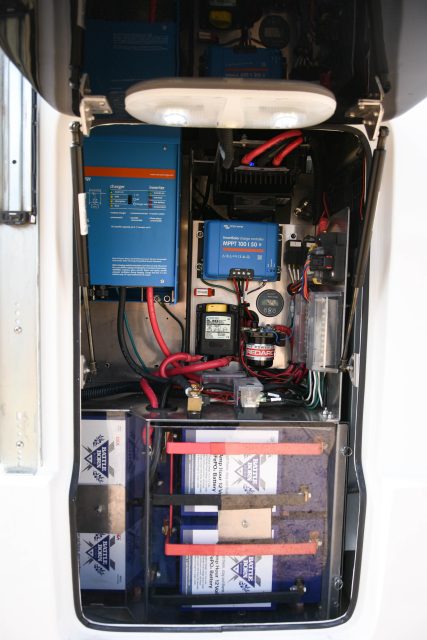
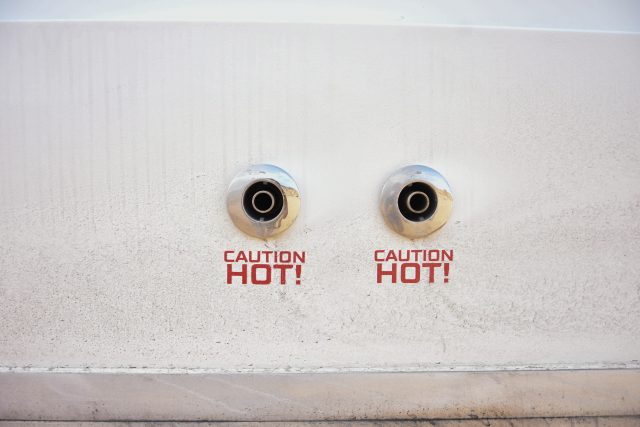
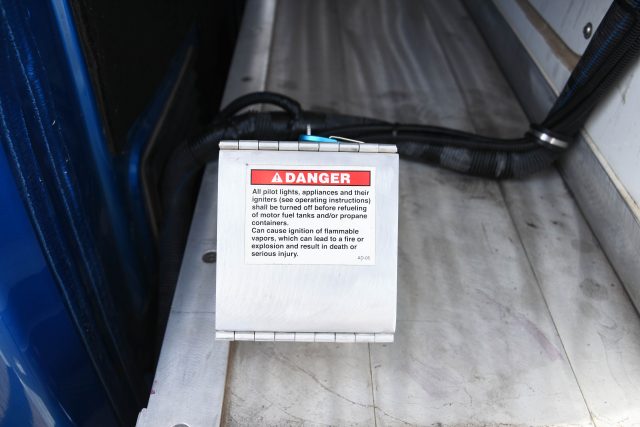

The comfortable dinette collapses into a single bed spacious enough for my 6’2” son, while my daughter, wife, and I snuggled up on the over-cab queen-size bed. A skylight window provides natural light and ventilation above the bed and an eye on the weather, and there is ample storage beneath the bed for clothing and lightweight gear. While we prefer a cassette toilet, the composting toilet was surprisingly effective and odor-free after vigorous stirring, and the hot shower more than adequate on a cold morning. The 75-gallon main water tank and 24-gallon graywater tank ensure that showers and dishwashing are possible, and you are able to transport and safely dump graywater in an appropriate area. For international or remote travel, the carbon block water filtration system with a UV-water purifier will provide peace of mind; we do, however, recommend storing only clean, sterilized water.
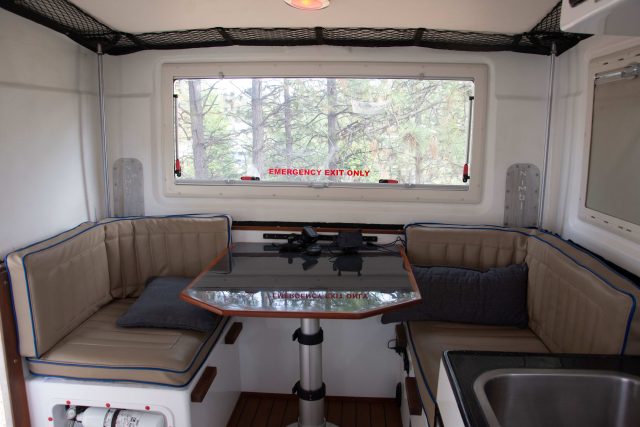
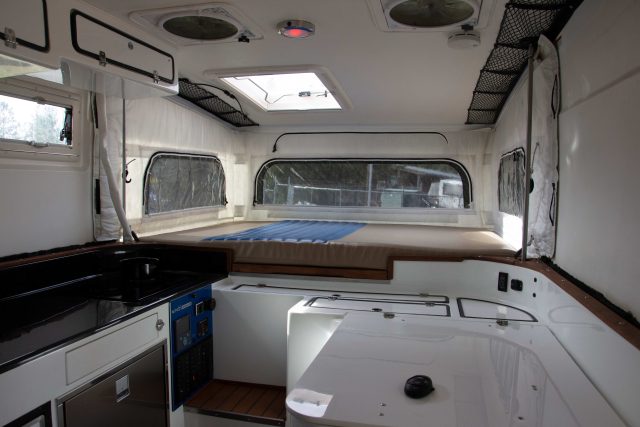
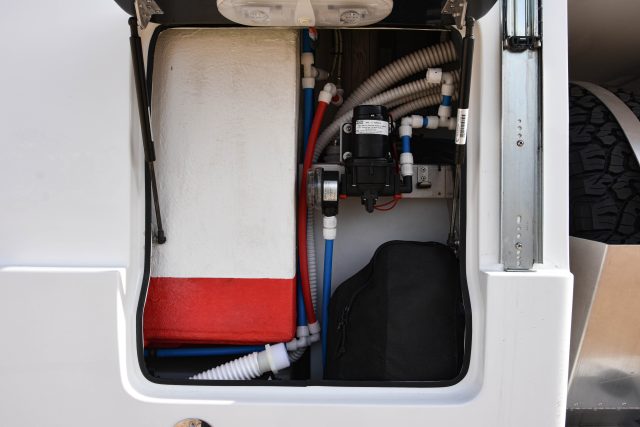

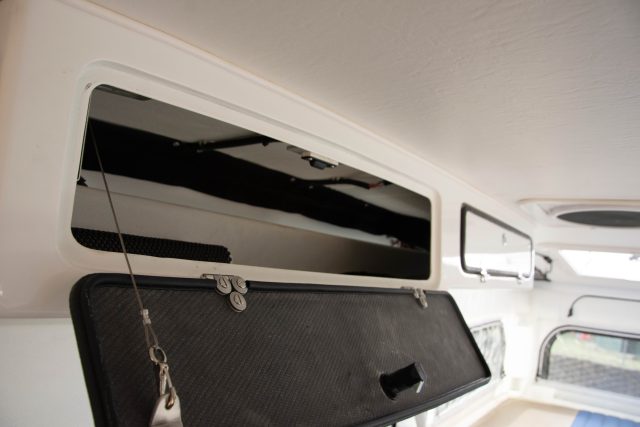
Security is a significant strength of the pod. We imagined scenarios where we could drop the roof while we were inside, providing a hard wall barrier to any threats (we would have to sit in the passageway to drop the roof). A more realistic scenario would be the reassurance of day-to-day security in urban areas and the ability to secure the camper, full of valuables, for RORO (Roll-On, Roll-Off) storage. With the roof of the pod closed, it is impossible to access the camper, and the outer storage bins are secured by the dropped roof (except for the tray storage boxes). Interior storage is more than sufficient, and there are a number of concealed cavities where important documents and expensive gadgets can be hidden.
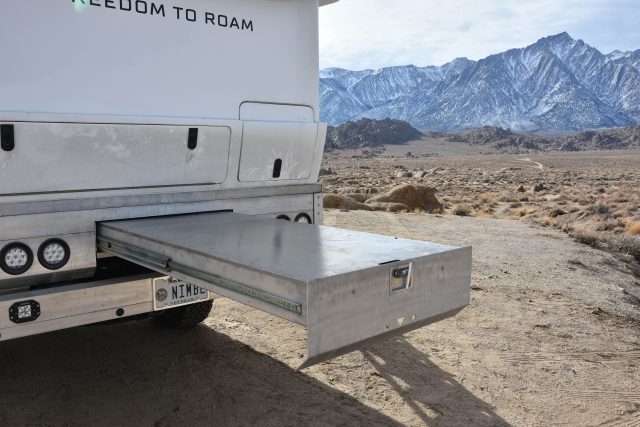
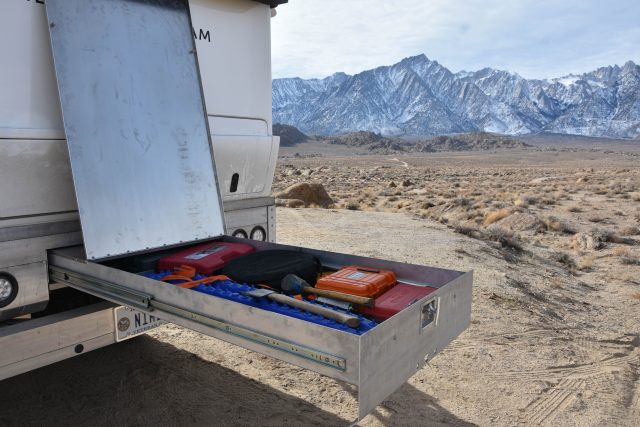
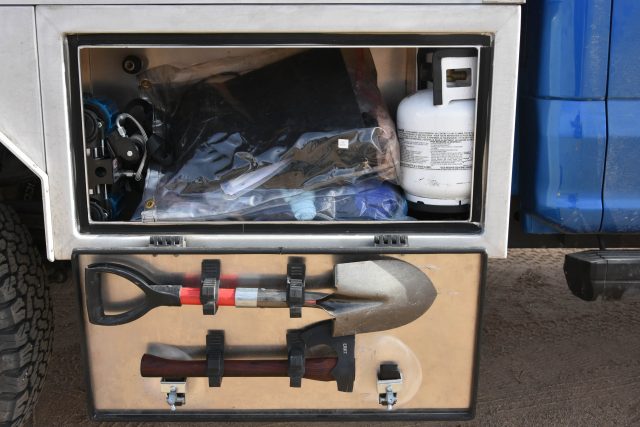

The Evolution is a head-turning conversation starter and showcase of the manufacturer’s technical skill and expertise, building a highly competent and luxuriously outfitted vehicle. We toured the Nimbl production facility (we will soon be publishing a Nimbl factory tour article) and came to understand the ethos of a company that handcrafts exceptional vehicles using locally sourced products and expertise. Each vehicle requires the full dedication of a team of 20 and almost three months to build.
Coming in at close to $400,000, including all the bells and whistles but this excludes the base vehicle, Blue is at the higher end of the Nimbl pricing scale. The starting price of a camper is $267,000 (before optional extras) with average builds reaching between $350,000 and $400,000 (built on the client’s vehicle).
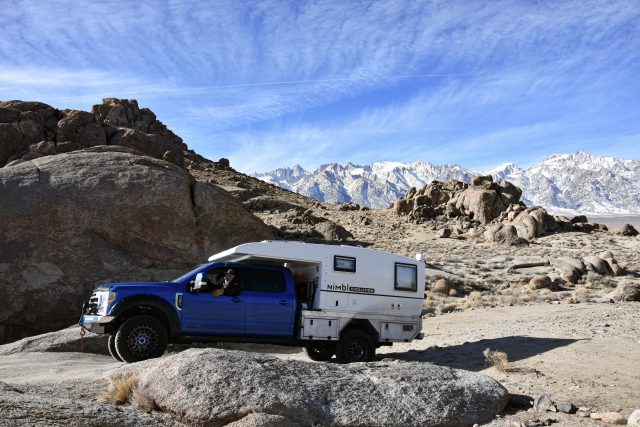
Would I drive this vehicle across Andes mountain passes, or would I commit to a crossing of the Amazon or Mongolia? Yes, with pleasure and with certain modifications. The power and handling of the vehicle are perfectly suited to hard-driving, and the build of the camper inspires confidence no matter the climate. If I were to order an Evolution, I would specify larger tires, reserve fuel tanks with fuel pre-filter (my primary concern, as always, is the availability of clean, high-quality fuel), a swing-away spare wheel carrier, and a muted color scheme. The Nimbl team has proven that they are dedicated to building a vehicle the customer needs to suit their style of travel, and they stand by their work.
NIMBL Evolution Standard Features
- Strong, lightweight, carbon-fiber-reinforced monocoque upper and lower hull sections and doors
- Nimbl 400 Ah LiFePO4 DC power system
- Four Battle Born 100Ah LifEPo4 batteries
- Victron 3,000-watt inverter/charger
- Victron BuckBoost DC-DC charger
- Victron Smart BMV battery monitor
- Victron Color Control system monitor
- Victron SmartSolar MPPT charge controller
- Solar Array 570-watt rooftop
- Webasto AirTop diesel/petrol cabin heater*
- Webasto ThermoTop diesel/petrol hydronic water heater*
- True induction dual-burner induction cooktop
- Isotherm stainless steel refrigerator, 6 cubic feet, AC/DC (in-cab pre-wire for additional refrigeration from camper battery system)
- MaxxAir Plus dual ceiling fans
- Smooth and quiet automatic hydraulic lifting roof with manual override
- Separate, spacious wet bath with shower and cassette toilet plus exterior shower
- Heated and baffled 75-gallon freshwater tank
- Heated 24-gallon graywater tank
- Carbon block water filtration system
- Tern Overland double-pane Euro-style windows with integrated shades and screens
- Custom memory foam sleep system (east-west custom queen, 60 x 77inches)
- Sunbrella custom upholstery
- Nimbl softwall – Thinsulate FR insulated
- Solid hand-finished mahogany/teak trim
- Nimbl firepit kit
- LED lighting throughout
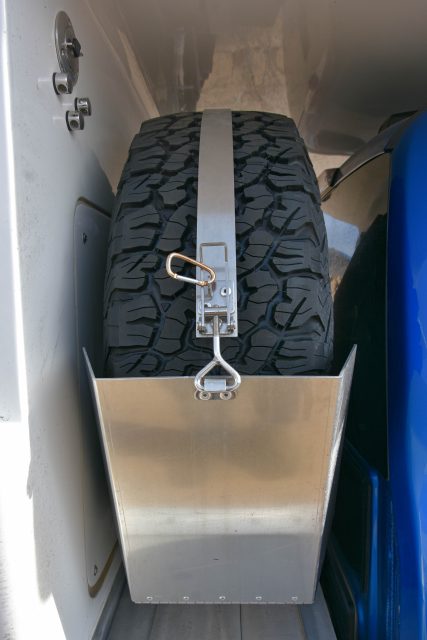
Nimbl Upgrades
- Cruise’nComfort 8000 Btu DC split-system air-conditioner
- Yakima roof storage racks or fourth solar panel (760 watts total)
- C-Head composting toilet
- DC television/monitor
- Honda 2,200-wattauxiliary generator
- GuzzleH2O DC ultraviolet water sterilizer
- Battle Born 600Ah or 800 Ah LiFePO4 DC power system (1.5-2x base capacity)
- Side rails and headache rack for use on flatbed (when camper is removed)
- Tripod camper jacks for camper removal and storage
- Extended 10-inch custom aluminum flatbed to allow for a spare and storage between the camper and cab
- Custom storage solutions for all travel gear (bikes, hang glider, surfboards, SUP, camera, etc.)
- Nimbl 270 awning
- ExtremeAire Endura twin-piston compressor with 4-gallon air tank
- GoLights dual rear LED flood and spotlights
- Nimbl custom aluminum front bumper with Come-Up 12.5rs synthetic rope winch and ARB high-intensity lighting
- Nimbl custom-forged rear leaf-spring package and off-road suspension kit
- ARB in-cab 50-quartfridge/freezer
- Digital rear-view mirror with built-in dash cam

See Scott Brady’s news release in April 2020 here with regards to the launch of Nimbl and a podcast by Scott Brady and Matt Scott discussing the best integrated expedition campers for the North American market featuring the Nimbl Evolution Camper
Contact www.nimblevehicles.com
Our No Compromise Clause: We carefully screen all contributors to make sure they are independent and impartial. We never have and never will accept advertorial, and we do not allow advertising to influence our product or destination.


